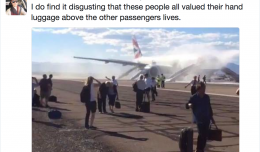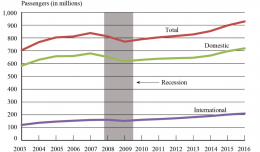One important aspect of travel safety has to do with the clothing that you wear when you get on a flight. Most people just think about getting some sleep or looking professional, but the clothing that you choose to wear can make an emergency situation far more challenging for yourself and those around you if you are in an evacuation situation leading to any number of scenarios that people should be prepared for.
I go by 4 rules when it comes to making flying outfit decisions:
1. Not too tight. Tight clothing can restrict blood flow throughout your body, putting you at risk for deep vein thrombosis (blood clots in the legs). Nylon tights, leather and even tight jeans, can be very dangerous for you on long haul flights. People in suits should loosen their tie and loosen their shoelaces a little.
2. Not too loose. Loose, saggy clothing can get caught on things when you’re trying to evacuate an aircraft, or rip your clothing off of you when you may well need that protective layer. Very loose clothing can also limit your ability to move just as much as tight clothing can, so make sure your pants are pulled up around your waist!
3. Cover your skin. In an emergency situation, there may be threats of fire, sharp objects or various aircraft chemicals that you do not want to have making contact with your skin. Protect your epidermis!
4. Strong fabrics. Just because Bruce Willis can go through a Die Hard movie with that one shirt, don’t think that you can. Thin flimsy clothing will take a beating and you’ll end up naked and unprotected outside the aircraft. Khakis, jeans, long sleeve polos and various cotton shirts are great options for you.
As in the video, extra emphasis on the shoes. NO flip flops. Avoid sandals or anything with an open toe. Keep away from high heels and also from any dress shoes that have hard leather soles, as they will be extra slippery in wet environments.
Clothing aside, when you are evacuating an aircraft, leave your belongings behind! There is no point in risking your life and the lives around you by reaching for items under your seat or in the overhead.
Remember these four musts and fly safe!
Phil Derner is the Founder and President of NYCAviation. Tweet him photos and details about your favorite flying outfit.







